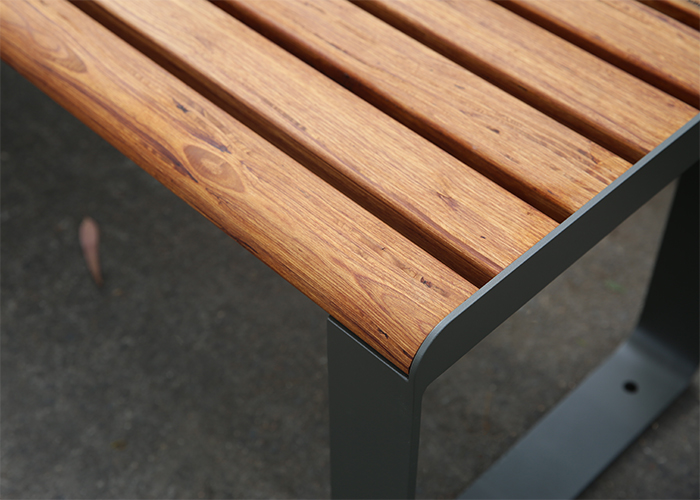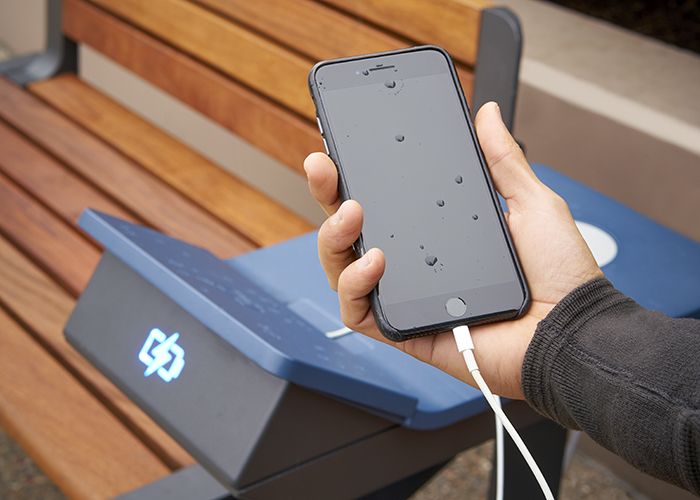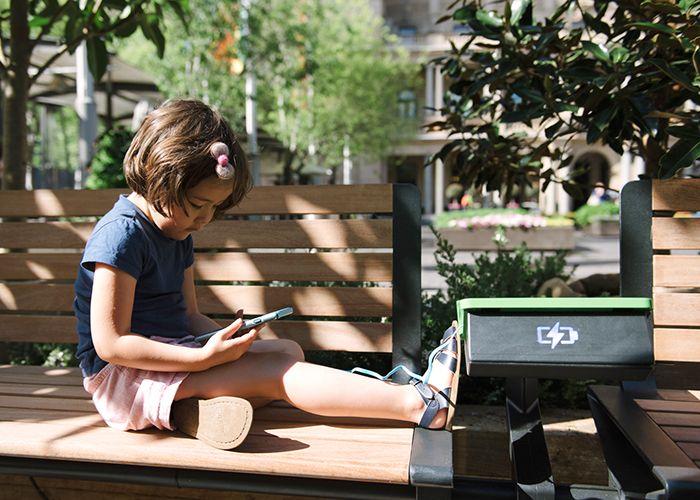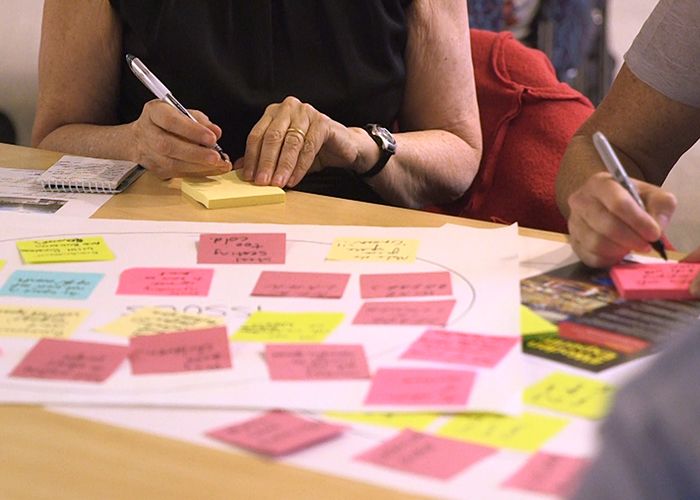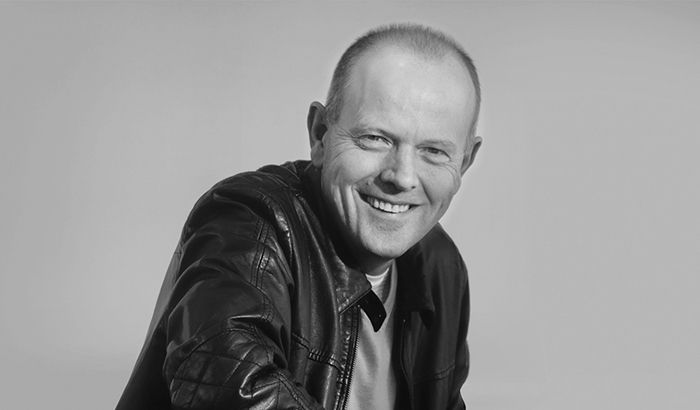
An inductee into the Design Hall of Fame and Fellow of the Design Institute of Australia, Mark Armstrong was Co-founder and Director of Blue Sky Design Group, the company that designed the Sydney Olympic Torch and Qantas check-in experience.
He is now a Practice Professor in Design with Monash University and advises Street Furniture Australia’s design team in an era of great technological change
Professor Armstrong provides industrial design expertise to several strategic research projects, utilising user-centered design methods to change outcomes for end-users.
When and why did you start Blue Sky Design Group, and what was your vision?
Blue Sky is a multidisciplinary design firm based in Sydney. The company was started in the early eighties by myself and partner. When it was founded I was working in Europe with Philips and was very keen to return to Australia to do my own thing. Thinking back it was very impulsive, no vision, hardly any strategy, just youthful enthusiasm and a passion for design.
The early years of Blue Sky were interesting and we grew slowly, learning our craft as we went. The Philips experience in Europe underpinned our thinking which eventually became a philosophy that encompassed a refined and purposeful aesthetic combined with designs that respond to real problems.
The Qantas Check-in, looking back was a transformational project in which the design team were able to re-invent the passenger travel experience from crossing the threshold into the terminal to stepping onto the plane. We were the first to simplify and automate an array of processes to streamline travel for Qantas passengers.
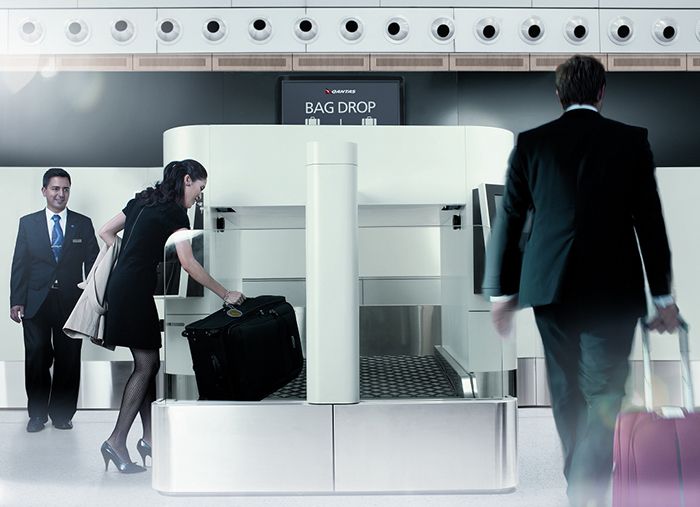
Designed by Blue Sky: the Qantas bag drop, at Sydney Airport.
How has user-centred design influenced your practice?
User-centred design is not a new thing; deep understanding of the customers needs has always been a factor in great pieces of design.
Grant Featherston, a mid century modernist famous for the design of numerous iconic Australian chairs, created wonderful aesthetics that were first and foremost comfortable and a delight to sit on. He certainly knew his customers: their aspirations and desires.
Henry Drefus who popularised industrial design in the 1930s was not a stylist; he applied common sense and a scientific approach to design problems. Being able to carefully articulate a design problem is one of the fundamentals of user-centred design.
User-centred design has come to prominence in recent years as it provides effective vision to non-designers and managers searching for meaningful responses to end-user needs.
At Blue Sky, understanding our customers has always been an underlying factor steering our work, but in the early 2000s we started to realise that this process should not be taken for granted as part of the “designers intuition,” but rather should be supported with tools and means to strengthen the level of understanding.
Can you describe the design process for the Sydney Olympic Torch?
The torch was a very special project that had a profound impact on the company and our team. I am not privy to the discussions that took place way back in 1989 when SOCOG (the Sydney Organising Committee for the Olympic Games) made their decision to proceed with the Blue Sky torch, but I do think our process contributed to a successful outcome.
We knew that to win this tender we must not only create a wonderful object with all the attributes required, but also demonstrate that our thinking was informed by a deep knowledge of the Olympic torch relay and the philosophy of the games and the Olympic Spirit.
We undertook extended research into the history of the games, back to the ancient Greeks and the modern Olympic movement. We studied Sydney and tried to distil the essence of this young and vibrant city: what are the features and forms that will express this youthful enthusiasm in a man-made artefact like an Olympic Torch?
We also knew we needed sophisticated technology, and partnered with some amazing teams including Harringtons, FCT Combustion specialists and the University of South Australia to form a winning team.
I did get to run a leg with the torch in Western Sydney, and I was cheered on by the “Ozzie Ozzie Ozzie” chant. That made the experience so much fun, and one I will never forget.
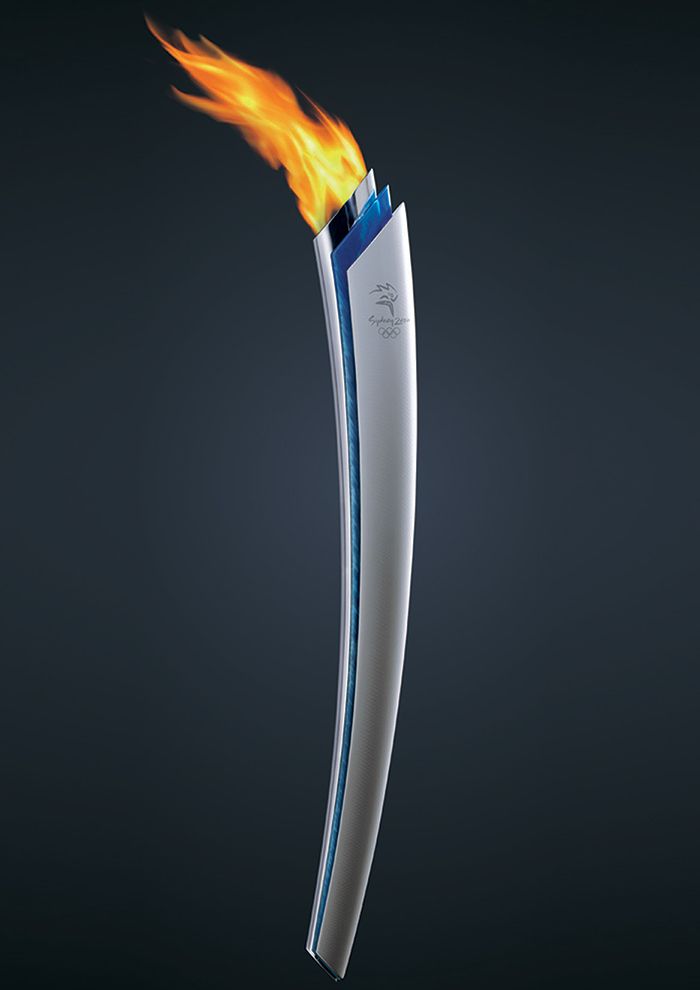
Sydney Olympic icon: Blue Sky’s torch design for the 2000 games.
How have you applied your commercial experience to your work with Street Furniture Australia and public spaces?
Street Furniture Australia has an enlightened view of design, they are design-led and all aspects of the company’s operations are designed in one way or another. They have a culture that fosters curiosity and allows great ideas to gestate and grow legs, the enthusiasm in the team is contagious. It’s a fun place to work.
I contribute to the design leadership and support a young and very talented team of designers and engineers to create new products and experiences for Street Furniture Australia customers. We are designing wonderful furniture, but more than that we are embedding technology and new smart systems that enrich public spaces for both our clients and their end-users.
Which Street Furniture Australia projects are you excited about, and why?
As we observe the rapid changes taking place in our cities, it becomes obvious that providers of infrastructure like ourselves must respond with new solutions that empower and delight our end-users and customers.
Some of the systems and products we are working on now will be seen in the upcoming ChillOUT: Smart Social Spaces Creating Connected Green Places project. This is currently in development with Georges River Council and the University of New South Wales, and received a grant from the federal government’s $50m Smart Cities and Suburbs Program.
Our next generation of products will create experiences that respond to the diverse cultures and needs of our community, and help our design partners to create world class outcomes.
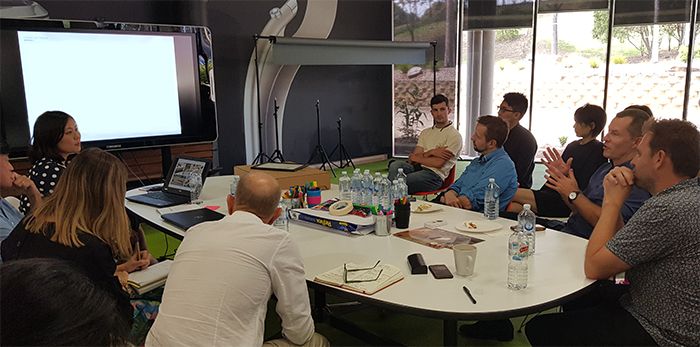
Co-design workshop at Street Furniture Australia, lead by Mark Armstrong.
In Profile is a Q&A series featuring Australian influencers of the public realm: players in the public sphere with compelling stories, not always landscape architects or affiliated with SFA.
To nominate an interviewee, please contact editor@streetfurniture.com






